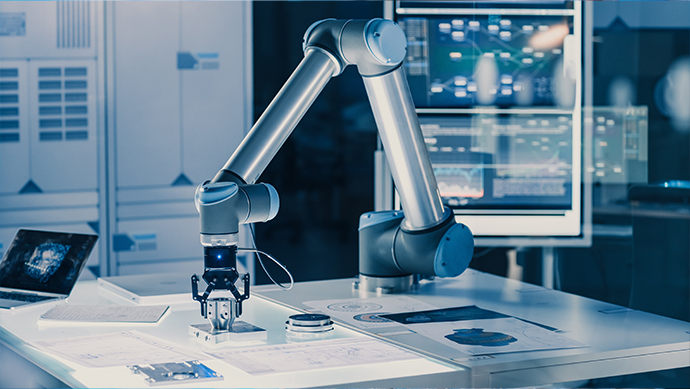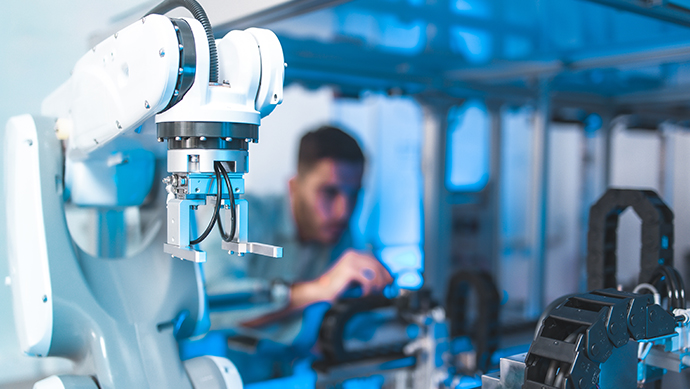Digitisation and Beyond: Understanding the Lab of the Future

What is the current state of digitisation of scientific research? What are the barriers and requirements of digitisation? How has COVID impacted the journey to the lab of the future? These are just some of the pressing questions asked – and answered – at Oxford Global’s annual Pharma Data and Smart Labs UK: In-Person event.
Held on the 8th and 9th September 2022 in London, UK, and with 200 plus senior representatives from leading healthcare, biotech, pharma, and research institutions in attendance, this was a not-to-be-missed event. The conference focused on the renewed interest in the pharmaceutical IT and data markets caused by the move to innovative and effective data management and organisational strategies.
Two of the most intriguing event presentations that looked at the developments pushing the boundaries of the industry’s growth, were given by Samantha Kanza, Senior Enterprise Fellow at the University of Southampton and Luigi Da Vià, Team Leader at GSK. This Insight article delves into some of the key takeaways from each talk.
To Digitisation and Beyond: The Digitisation Requirements of a 21st Century Scientist
Samantha Kanza, opened her presentation by asking, “why are we still using paper in the laboratory?” Whilst lab books are used at various levels of academia due to their easy storage ability, portability, and their lack of requirement of a power source, they do have disadvantages. Paper lab books are easy to lose and destroy. What’s more, they are harder to back up and share, and their data is less readily accessible. “It is also difficult to search a paper document to locate a specific data entry or piece of information,” Kanza pointed out.
- Pharmaceutical Automation and the Factories of the Future: How Will the Industry Look in 2030?
- What are the Best Approaches to Ensuring Information Findability?
- Digital Transformation in the Lab: Paperless and AI Technologies
On the other hand, electronic lab notebooks (ELNs) offer an accessible and searchable data retrieval format. “Most importantly, they are easy to back up, which becomes integral when working with data in the lab,” Kanza confirmed. Nevertheless, there are concerns about the safety of using technology in the lab, and the practicality of ELNs is questionable. For example, it can be challenging to create diagrams on ELNs, and data entry is slower and somewhat inflexible. Moreover, this form of digital note-taking relies on a power supply and often an internet connection which may not be available everywhere.
Digitisation and COVID
Before the COVID-19 pandemic, digitisation was not a priority. But with the increased concern for hygiene following the outbreak in early 2020, paper utility and distribution became a thing of the past. “With lockdown, paper documentation became redundant and working scientists had to maintain health and safety measures by trying not to touch the same piece of paper,” Kanza continued.
To determine whether COVID was the push to digitisation that the industry needed, Kanza conducted a survey to “ascertain if the landscape [in digital technology usage] had changed and [determine] what the community needs for the future.” Results showed that whilst researchers use a mix of paper and electronic methods, there is a heavy reliance on computational methods for analysis and writeup.
The next step to achieve digitised adoption in the lab will be to provide a better data management system. “The barriers to digitising seem more linked to people, and the barriers to managing data better are linked to people, data, hardware, and software,” Kanza explained. Therefore, improved data recording methods within the laboratory environment, which do not necessitate the use of a keyboard, such as voice and hybrid technologies, are needed.
GSK’s Journey to the Lab of the Future
“What will the lab of the future look like?” Luigi Da Vià, Team Leader at GSK, asked. He pointed out that “whilst every lab will look differently depending on which organisation it is and which workflows it supports, what will be important is that the common denominators are agreed upon across the industry.” Da Vià’s presentation showcased GSK’s ambition to embed automated processes across all phases of drug development.
GSK’s current journey is focused on delivering high-quality data to its customers via tried and tested data systems and processes to ensure optimal decision-making. “We want to provide systems that are fit for purpose with the aim of advancing workflows and unit validation,” Da Vià confirmed. What’s more, providing the necessary training to GSK scientists on the latest start-of-the-art automation and facilities for drug development is a vital component of their strategy.
Change Management: A Strategy of Knowledge Management
The presentation also touched on the importance of promoting change management to facilitate the smooth adoption of lab-based innovation. Experimental design and execution when trying to standardise workflows are crucial to this. As Da Vià puts it, “having standardised workflows for routine work packages lowers the probability of errors during runs, increases turn-around, and builds trust with internal partners.”
Da Vià concluded that to reach the future lab, “we need better data management systems and electronic lab notebooks (ELNs) to enable decisions driven by comprehensive datasets.” By endorsing high-quality data expectations along with accelerated smart resourcing, the industry can work to achieve optimised knowledge management in labs. Seeking workflow integration across multiple departments, promoting data sharing, and utilising automation are among the top strategies available. In addition, user-friendly apps for data visualisation and comprehensive IT support are set to pave the way for the laboratories of tomorrow.
Forecast and Projections
Whilst the future remains challenging to predict, what is clear is that the future of the lab is fast approaching. Innovations within the industry are happening every day, and it will only be a matter of time before as-yet unheard-of technologies and processes will emerge. The hope is that the digitisation transformation is the catalyst for unlocking not only the scientific research and discoveries of tomorrow but also the operational and technological innovations of lab-based working.
Want to read more about how the pharmaceutical factory of the future will look? Head over to our PharmaTec portal to see the latest insights from the industry’s best and brightest. If you’d like to learn more about our upcoming Pharma Automation & Robotics conference, visit our event website to download an agenda or register your interest.




.png)

